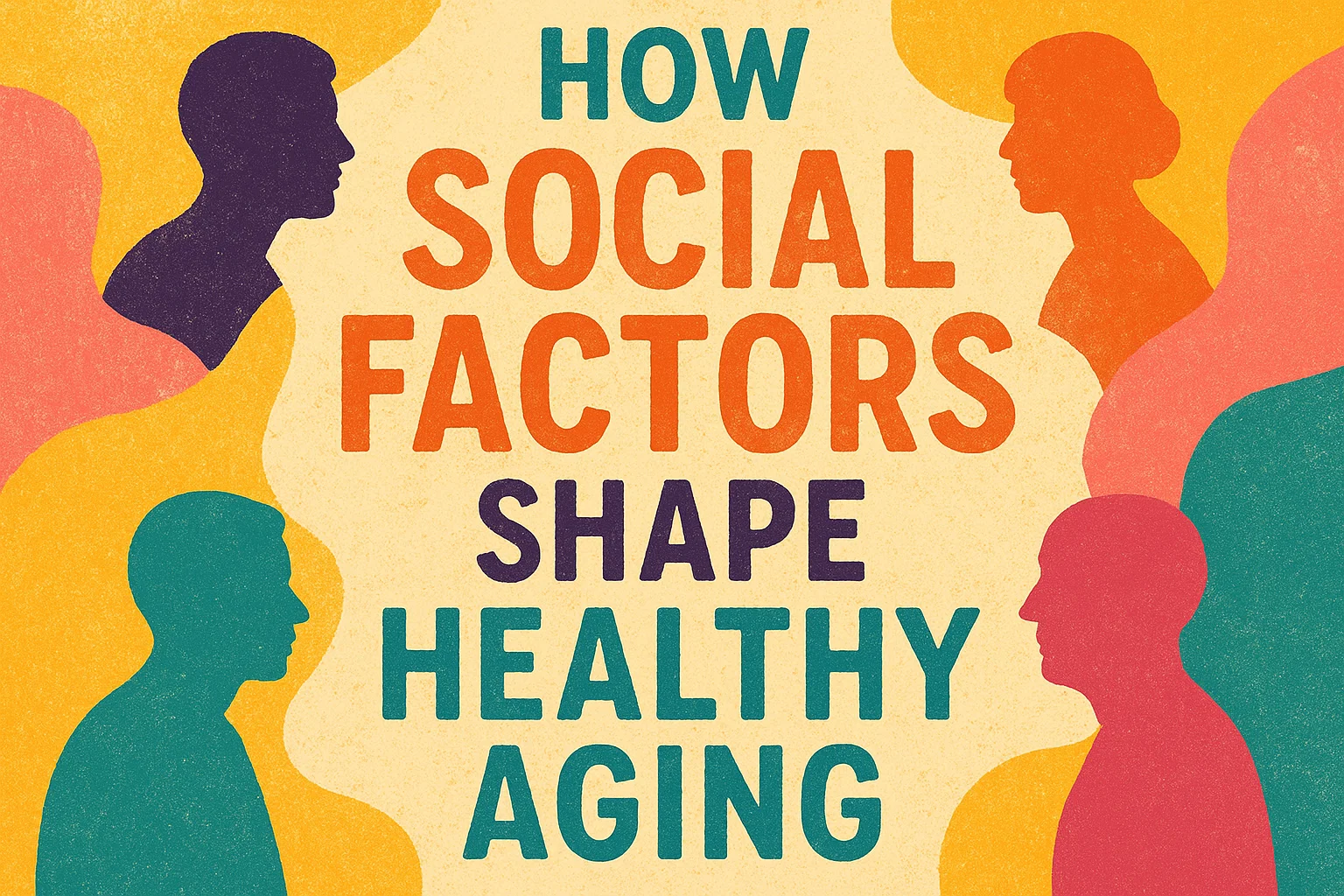A recent analysis of over 44,000 adults across Latin American and Caribbean nations showed that factors like schooling, income, social engagement and mood each outweigh chronological age when it comes to preserving cognition and daily function. In regions marked by deep inequities, improving social determinants of health (SDH) can unlock gains in longevity and quality of life that a focus on birthdays alone cannot achieve.

Education and economic stability: Gates to opportunity
Educational attainment emerged as a powerful predictor of cognitive resilience. More years of schooling correlate with richer vocabularies, stronger executive function and enhanced problem-solving skills, capacities that help older adults adapt when physical challenges arise. Likewise, stable income provides access to nutritious foods, safe housing and preventative services. Community-driven adult-learning workshops and microcredit programs, for example, can raise both knowledge and financial security, laying a foundation for sustained independence.
Social engagement: More than friendly conversation
Strong social connections have been linked to slower cognitive decline and lower dementia risk. Activities such as group volunteering, intergenerational mentoring or local cultural festivals weave mental stimulation and emotional support into daily life. Research on brain health underscores that regular, meaningful interaction, whether it’s sharing stories at a neighborhood center or joining a cooperative gardening project bolsters neural networks and preserves memory.
Mental health: A silent driver of decline
Symptoms of depression and anxiety proved the single strongest predictors of declines in both cognition and function . Stigma and scarce resources often leave mood disorders untreated, accelerating social withdrawal and eroding self-care. Integrating simple screening tools into routine community-clinic visits, equipping local health workers with basic counseling skills, and organizing peer-led support circles can help break the link between low mood and functional loss.
Cardiometabolic vulnerabilities in social context
High blood pressure, diabetes and obesity, conditions that disproportionately affect disadvantaged groups, also drive functional decline. Yet cardiometabolic health does not exist in a vacuum: food deserts, unsafe streets and chronic financial stress all shape risk. Community kitchens that teach preparation of affordable, nutrient-dense dishes, combined with subsidies for fresh produce, can shift dietary patterns. Neighborhood walking groups or culturally resonant dance classes not only boost activity but also strengthen social cohesion.
Policy and environment: Crafting supportive settings
Urban design and public policy set the stage for daily behaviors. Walkable streets, accessible parks and safe public transit encourage movement and chance encounters, while subsidies for corner stores to stock fruits and vegetables make healthy choices easier. Lessons from Blue Zones, the regions of the world with the highest centenarian rates, highlight how community-oriented environments, shared meals and multigenerational living support longevity.
Tailoring interventions across countries
Although chronological age accounted for less than 20 percent of variance in outcomes, its impact grew in higher-income LAC nations, where social inequities are smaller, and biological aging factors reassert themselves. This underscores the need for a dual approach: aggressively reduce disparities in lower-income settings, while layering on targeted prevention and wellness programs in more affluent regions. Flexibility and local co-creation, engaging community leaders in program design, ensure relevance and sustainability.
Measuring success: Beyond healthcare metrics
Traditional indicators like hospital admissions or pharmaceutical use capture only part of the picture. To gauge real progress in healthy aging, communities should track metrics such as:
Social participation rates: Attendance at clubs, cultural events or volunteer programs
Self-reported well-being: Surveys of mood, loneliness and perceived purpose
Functional assessments: Simple tests of balance, grip strength and daily living tasks
Such holistic monitoring fosters accountability and highlights successful local innovations.
Empathy and cryopreservation options
A terminal diagnosis brings profound uncertainty, and even the strongest social and health supports may feel insufficient. We understand the emotional toll of such news, the wish to protect one’s mind, identity and relationships. Cryopreservation is not a cure but an opportunity to pause biological processes at legal death, preserving both body and the rich tapestry of neural connections. If you’d like to learn more about this option and discuss whether it aligns with your hopes, we’re here to listen, clarify and support you with compassion.
About Tomorrow.bio
At Tomorrow.bio we are dedicated to advancing the science of cryopreservation with the goal of giving people a second chance at life As Europe’s leading human cryopreservation provider we focus on rapid high-quality standby, stabilization and storage of terminal patients preserving them until future technologies may allow revival and treatment.
Our mission is to make human cryopreservation a reliable and accessible option for everyone We believe that no life should end because current capabilities fall short.
Our vision is a future where death is optional where people have the freedom to choose long-term preservation in the face of terminal illness or fatal injury and to awaken when science has caught upInterested in learning more or becoming a member
📧 Contact us at hello@tomorrow.bio
🌐 Visit our website www.tomorrow.bio
🤝 Schedule a call with our team Book a consultation
References: Santamaria-García, H., Sainz-Ballesteros, A., Hernández, H., Moguilner, S., Maito, M., Ochoa-Rosales, C., Corley, M., Valcour, V., Miranda, J. J., Lawlor, B., … & Ibañez, A. (2023). Factors associated with healthy aging in Latin American populations. Nature Medicine, 29, 2248–2258. https://doi.org/10.1038/s41591-023-02495-1



